The Venn Diagram of Relationships for a Pastor's Family
And why you need friends inside and outside of the church
This post is part of a series I’m doing in October on pastoral ministry. If you’re new here, my husband is currently the lead pastor of a church outside Savannah, Georgia. We’ve been in full-time ministry since 2009, and he’s been an ordained pastor for almost 10 years. I am writing out of our experience in hopes that it will encourage those in ministry as well as those who love people in ministry. Here are the other posts in this series:
How to Appreciate Your Pastor (and Why I Appreciate Mine)
In the 16 years that Christian and I have been married, he has been on staff at five different churches: one for three years, one for two years, one for two years, one for three and a half years, and our current church for five and a half years. As I have already shared in my post Why I Still Love the Church, we have experienced much grief within the context of the local church, but we have also experienced great joy. I’ve also seen how difficult it can be to navigate relationships as part of a ministry family.
I’ve often used the concept of a Venn diagram to explain why the distribution of relationships for pastors and their families make ministry even more complicated. And now, after sketching out what I’ve been trying to say for over a decade, I have used my lackluster graphic design skills to try to communicate this for the sake of those in ministry as well as for those who support them.
First, I present the Venn diagram of relationships for your average church member.
Most individuals, couples, and families have relationships in each of these three large circles—work, church, and other. In “other,” include extended family, neighbors, and relationships with people from your kids’ activities or the gym or anywhere else where you’ve gotten to know someone. If you don’t work outside of the house, your “other” relationship circle is still probably relatively large. You may even have some relationships that straddle two circles—perhaps you go to church with someone you also work with, or maybe you work with someone whose child is on the same soccer team as your kid.
The nice thing about these three different circles is that any kind of loss in one is compensated for by the presence of the relationships in the other circles. For example, let’s say you change jobs, but you’re still living in the same area.
A job change will mean your family has a net relationship loss, at least until relationships are formed at the new job. But your church relationships are intact, as well as your social relationships. You may even continue relationships with some former colleagues, who move into the “other” relationship circle. If your family isn’t close to anyone you work with, only one member of the family experiences this as a loss.
Another transition is moving. This is a big transition, and usually involves a significant loss of relationships, because we only have the capacity to keep up with so many people.
In this scenario, you will probably lose relationships in each circle just because of lack of proximity. But you could potentially maintain relationships from each circle as you move to a new place, and those circles will all be replenished in time in your new home.
The final transition is changing churches—both with conflict and without. We’ll start with a transition without conflict.
Maybe you’ve moved within your city and it makes more sense to go to a church closer to where you now live. Or maybe you’re helping plant a church in a new area of town. This does result in relational loss, but it might be minimal.
In a church transition that involves conflict—a church split, or you leaving the church over some kind of disagreement with the church elders, there will be more relational loss.
You may even lose some of those work-church or other-church friendships. It’s possible, although I didn’t show this in the image, that if the conflict was widespread and affected many members, you may even retain a few of those church relationships (perhaps you all start going to a new church together).
All of these transitions involve loss, and all of them are going to be difficult. Most people have experienced these kinds of transitions, and even in the best of circumstances, there may be pain. But for a pastor’s family, the Venn diagram looks a little different, and the implications of a job or church change are more impactful and potentially more harmful.
Here’s what the basic Venn diagram of relationships looks like for a pastor’s family.
Consider how this compares to the image of relationships for a regular church member.
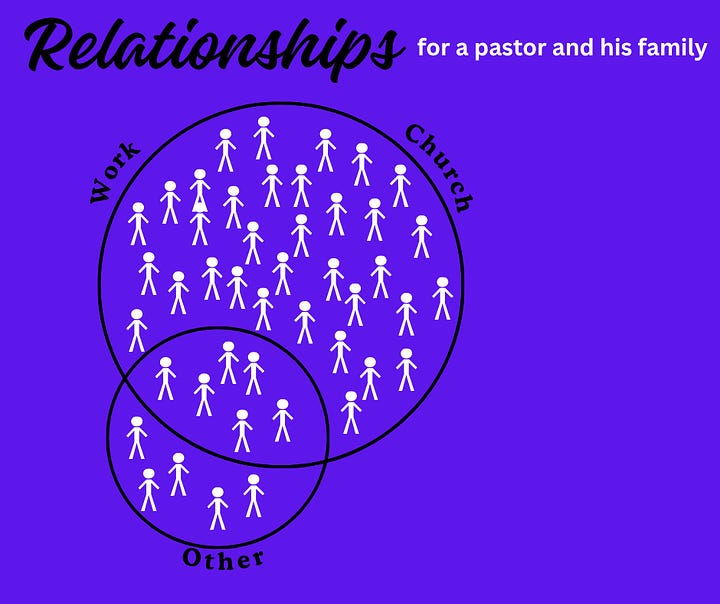
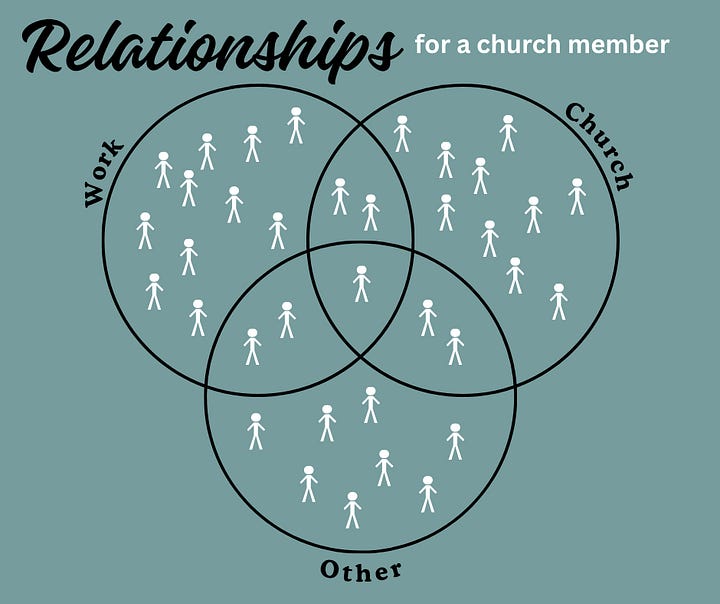
The number of relationships for each person may be the same, but the distribution is very different. First, there are only two circles for a pastor and his family: work/church and other. (If the wife works outside the home, she may have a work circle.) All of the husband’s coworkers and employees are also part of your church community. And all of your church friends, whether they are on staff at the church or not, exist in that large circle.
Secondly, yes, there is another circle of the “other” relationships—people you have relationships with outside of church—but most pastors’ families are limited in their capacity for much else. That little sliver of circle may only include some neighbors and extended family, who may or may not be local.
But what happens when, for whatever reason, a pastor and his family have to leave their church?
Our least painful church transition was when we left the church we had been at while Christian finished seminary. Once he had his degree, he was hired at another church. We left the seminary church with excitement and grief, because we had been loved there so well and we knew we would not be able to maintain all those friendships on the same level once we got to our new church.
This is a pretty good depiction of how our relationships changed. Many of our relationships with people at the seminary church ended because of lack of proximity and lack of time. We had new people we were pouring our lives into, and we only had so much capacity for relationships. Because we were still in the same area, we didn’t lose many of the relationships outside the circle. (For those who move to a new city, many of those relationships will be lost as well.)
The work/church circle relationships will eventually increase again, once you get settled at a new church. But close relationships take time for anyone to develop.
We now come to the most painful transition. Our family has experienced this kind of relational rupture two times. A third time, the church plant we were part of closed after the pastor disqualified himself from ministry. While the conflict did not directly involve us, the church closing naturally ended many relationships, for the reasons I’ve already shared (lack of proximity and capacity).
When a pastor and his family leave a church and there is conflict, the resulting relational diagram goes almost dark. We have found it almost impossible to sustain relationships with people who remained at a church that we left as a result of conflict. It was not because we didn’t care about them. In some cases, the church members remained at the church, and the conflict was among leaders at the church. We didn’t want to be accused of gossip or spreading division, so we didn’t share everything with them. As a result, they were not aware of the deep pain we felt, and there was a massive disconnect in the relationship.
In other cases, there were false narratives spread about us after we left, and church members never asked for our perspective, and so we were seen as the source of the conflict. Nobody likes conflict, so once we were out of sight, we were out of mind.
The impact of this kind of rupture on a pastor and his family cannot be overstated. It feels like the bottom is falling out. Choose your metaphor: lost at sea, sinking in quicksand, falling off a cliff. The conflict itself is bad enough, but the family has then lost most of the support network that is usually relied on in difficult times. The conflict is the initial suffering, and the loneliness in the conflict is further suffering.
Recently my friend Tim shared with me what he had been learning about the difference between tragedy and trauma. Tragedy, he said, is something we all experience—any hard thing we go through. But what makes tragedy more devastating, what morphs it into trauma, is when there is a lack of support and relational care in the wake of the tragedy. The death of a loved one is a tragedy; that death without anyone to turn to for support leads to that experience becoming traumatic. Sexual abuse is almost always traumatic because the very nature of the tragedy often causes the sufferer to isolate himself or herself without support.
The picture above was taken on a Sunday afternoon in October 2019. That morning after church, our congregation learned that Christian’s job would be ending within the next six months. There was much more going on behind the scenes, but for a variety of reasons, most people were not aware of the deep emotional pain we were experiencing. Christian was home, trying not to fall into a pit of despair, and I took our kids to get shaved ice so I could try to explain to them that we would likely be moving within the next six months (we had no idea to where). I was 4 months pregnant.
That experience was traumatic. We had also experienced another traumatic church departure in 2012. In both cases, we were told either explicitly or implicitly not to talk to the congregation about the details of why we were leaving. The pain and hurt we felt at having to leave were bad enough. The isolation and loneliness that accompanied that pain drove us to despair.1
In the last year, though, the Lord in his kindness showed us that it doesn’t always have to be that way. Although we did not experience a church departure, we did experience a painful church conflict that led to the end of some relationships.
By God’s grace, our Venn diagram of relationships has grown in such a way that we have many more people outside the work/church circle. While navigating this conflict, two of our friends, Tim and Jenni (pictured above), kept in touch with us and prayed for us. When the conflict reached its climax, Tim and Jenni drove five hours to see us and be with us. As we waited to see how the dust would settle and which of our relationships would survive, we knew that Tim and Jenni were our friends. As I reflected on this recently, I realized that our friendship with them, along with support from within our church, made what happened at our church remain a painful, heartbreaking tragedy without becoming a trauma.
If you are in ministry, I hope that you never experience a painful church departure. Were I to list the most painful experiences of my almost 40 years of life, our three painful church departures would be at the top of the list. But we live in a broken world, and we are all part of broken churches that are made up of broken people. There will continue to be relational rupture until Jesus comes back, and there isn’t always much we can do to control it. What you can do, though, is seek to strengthen and develop relationships that will be part of what sustains you when the Venn diagram of pastoral relationships tries to backfire.2
If you are not in ministry, but you are part of a local church, I’d encourage you to consider how you can be part of supporting your pastor and his family. If you are aware of them experiencing relational conflict with other people, think about how you can express your support for them. If a pastor at your church is leaving, ask them how they’re doing and be prepared for honest answers.
Pastoral ministry is a marathon, and it is made easier by having fellow pilgrims beside us while we look forward to the day when there will be no more broken relationships, no more ruptured communities, and no more grieving hearts.
Unto the grave, what will we sing?
“Christ, he lives; Christ, he lives!”
And what reward will Heaven bring?
Everlasting life with him.
There we will rise to meet the Lord,
Then sin and death will be destroyed,
And we will feast in endless joy,
When Christ is ours forevermore.
—”Christ Our Hope in Life and Death”
I recognize that vague references to past church experiences beg a lot of questions about the nature of each particular conflict and whether we were to blame for some of the pain we experienced. I plan to write more about this in a post later this month: What to Do About Bad Pastors.
I plan to write more about this in my next post: How to Handle Stress in Pastoral Ministry.


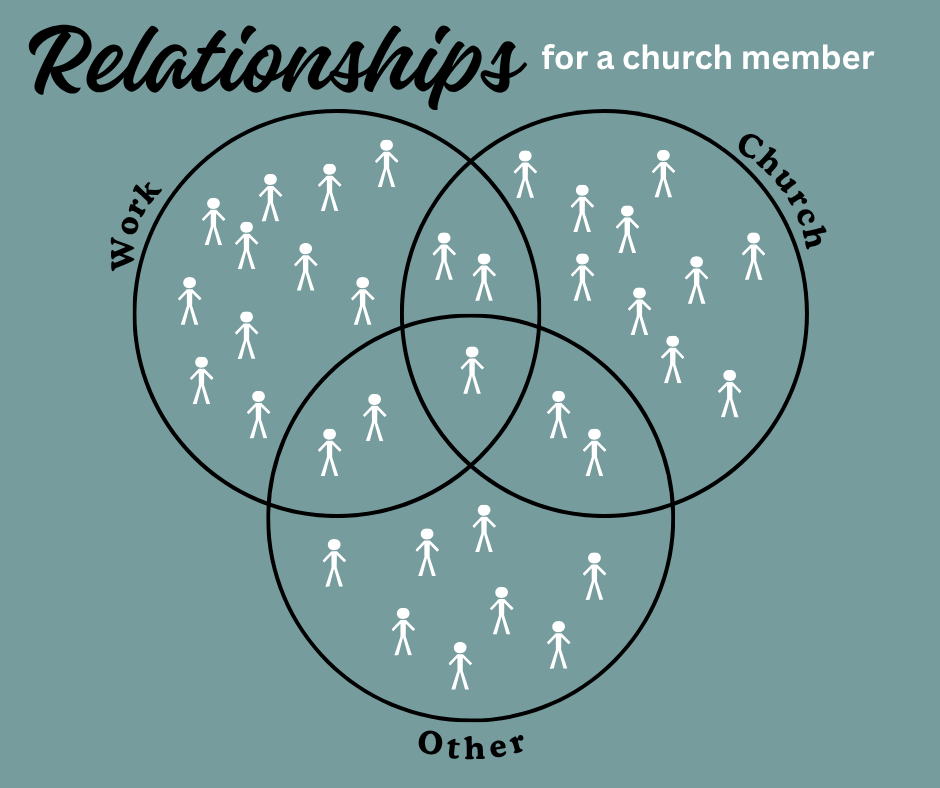
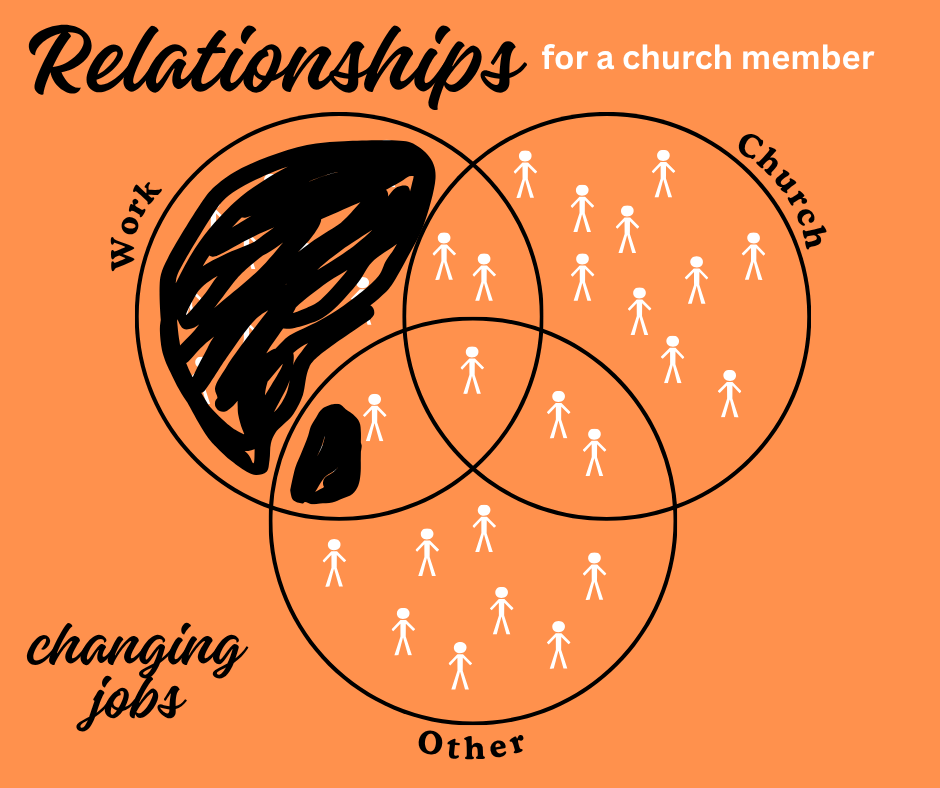
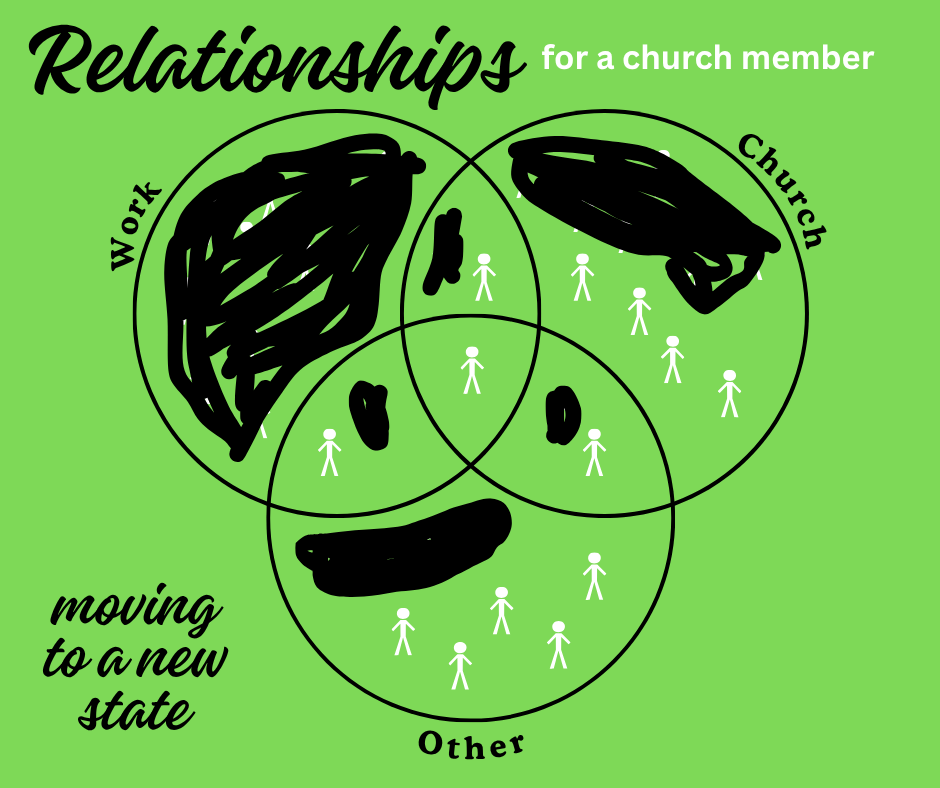
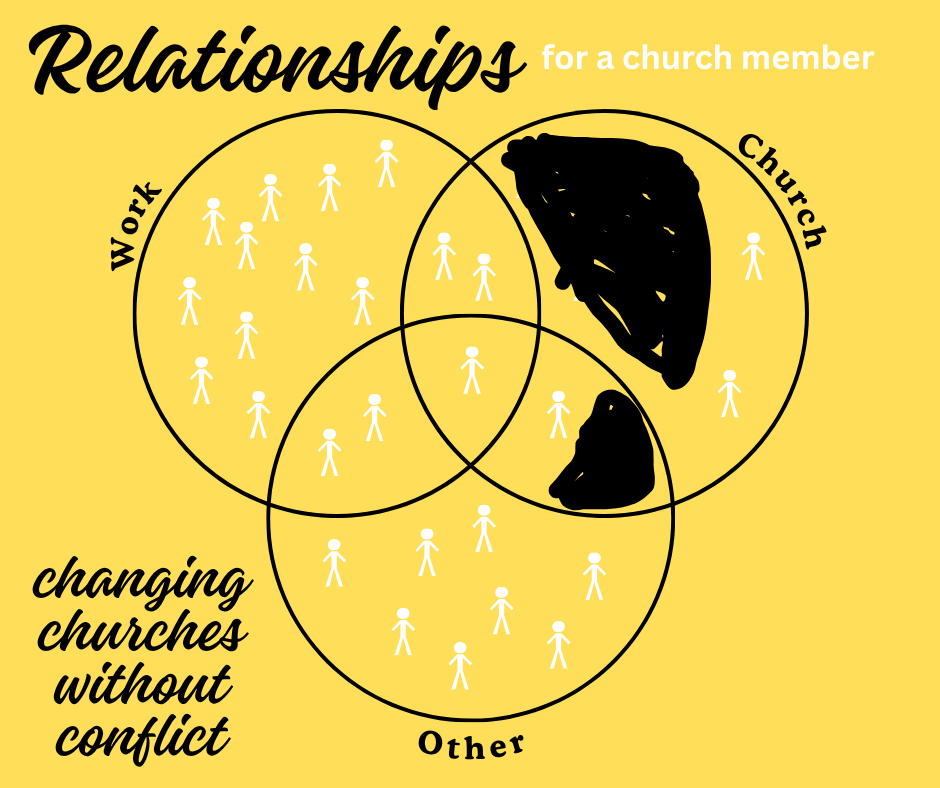
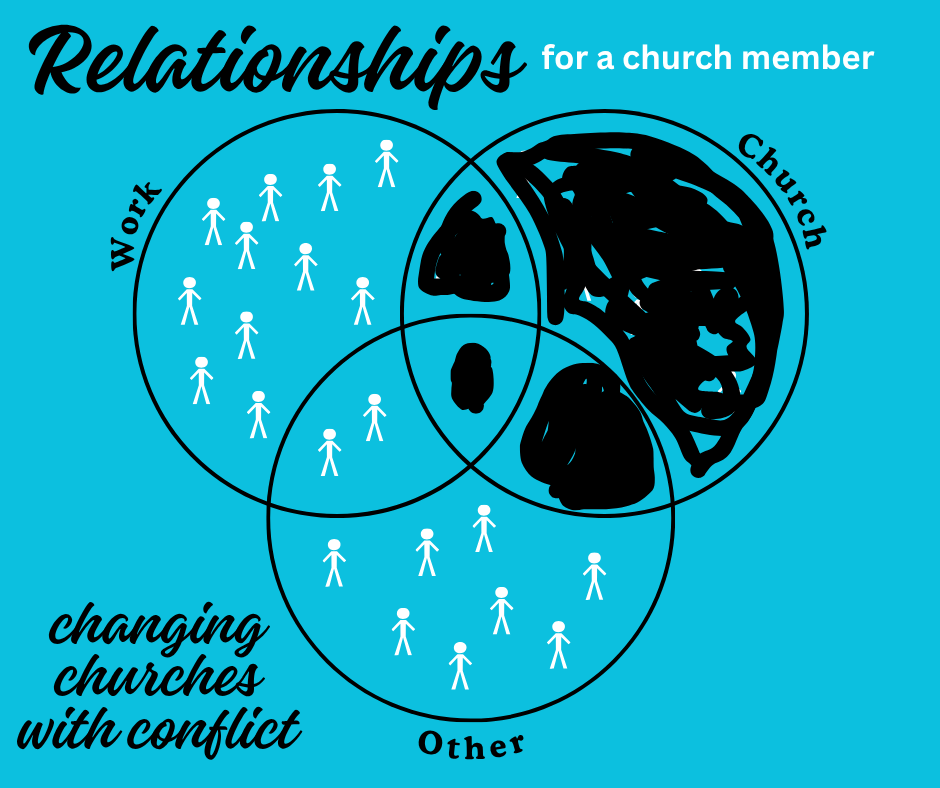
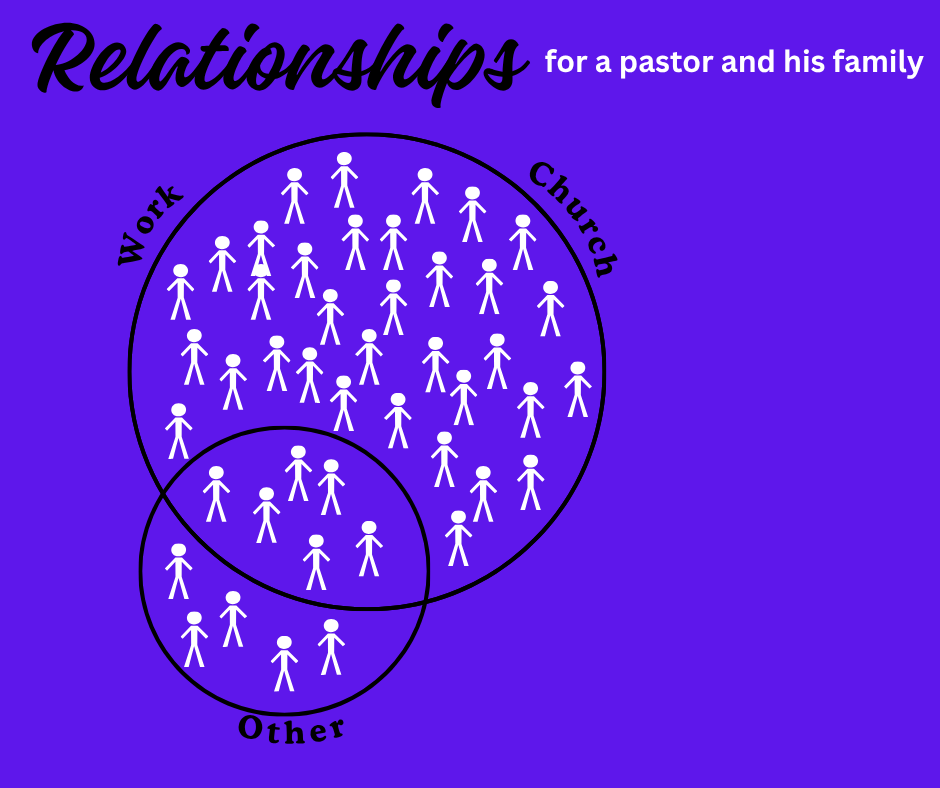

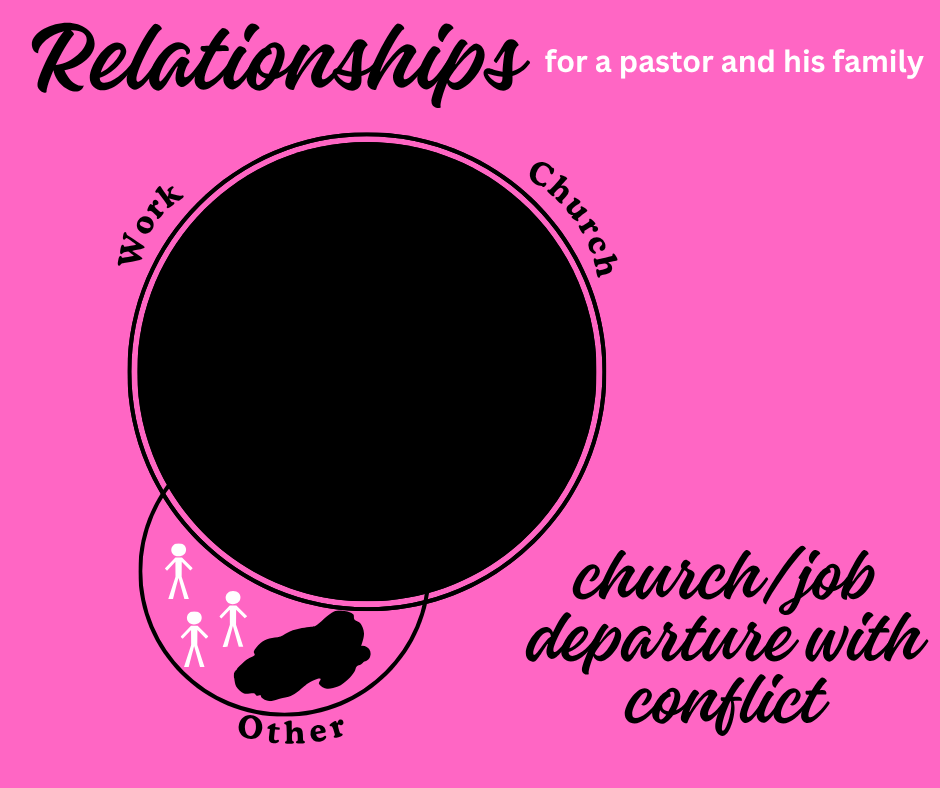

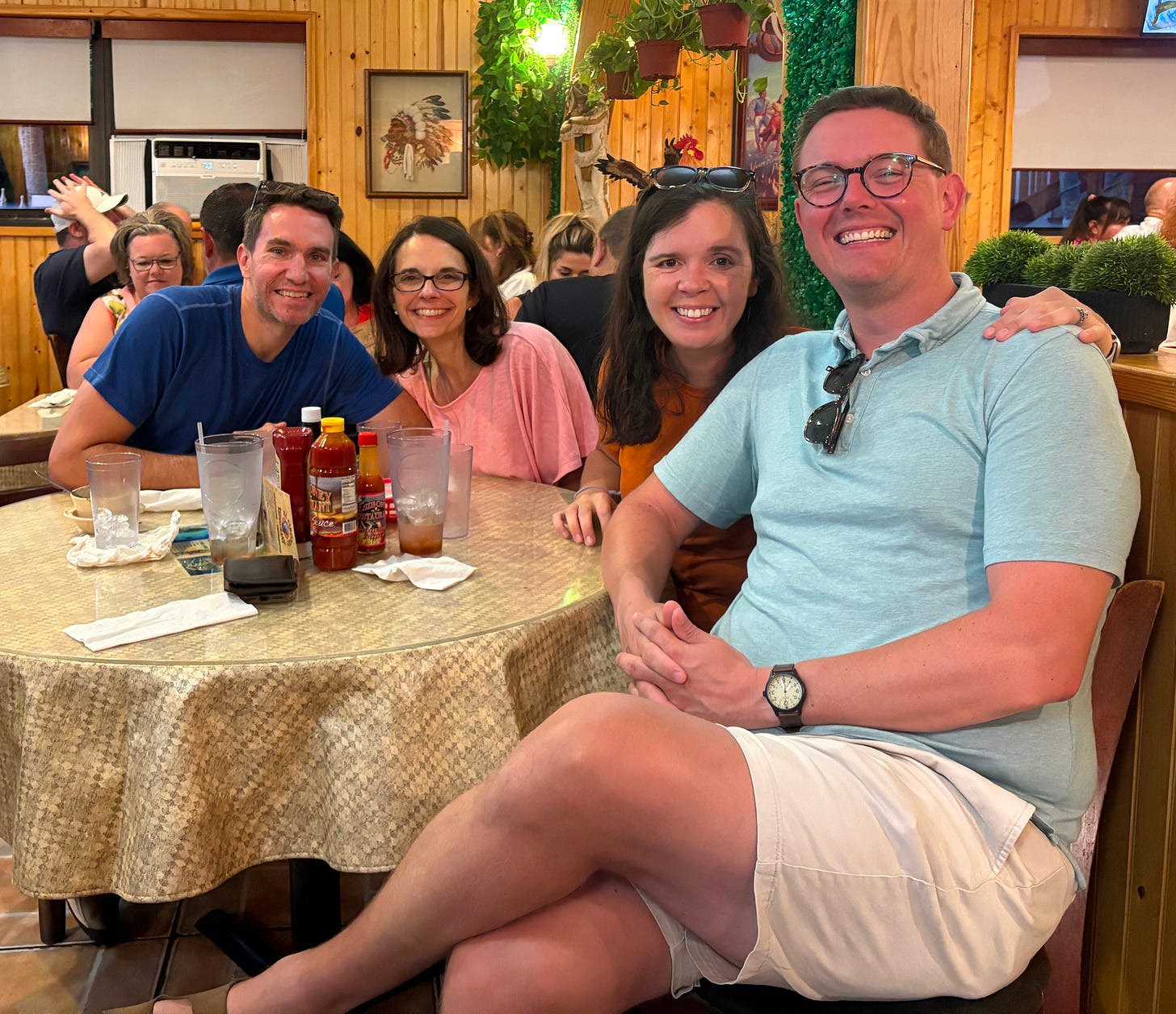
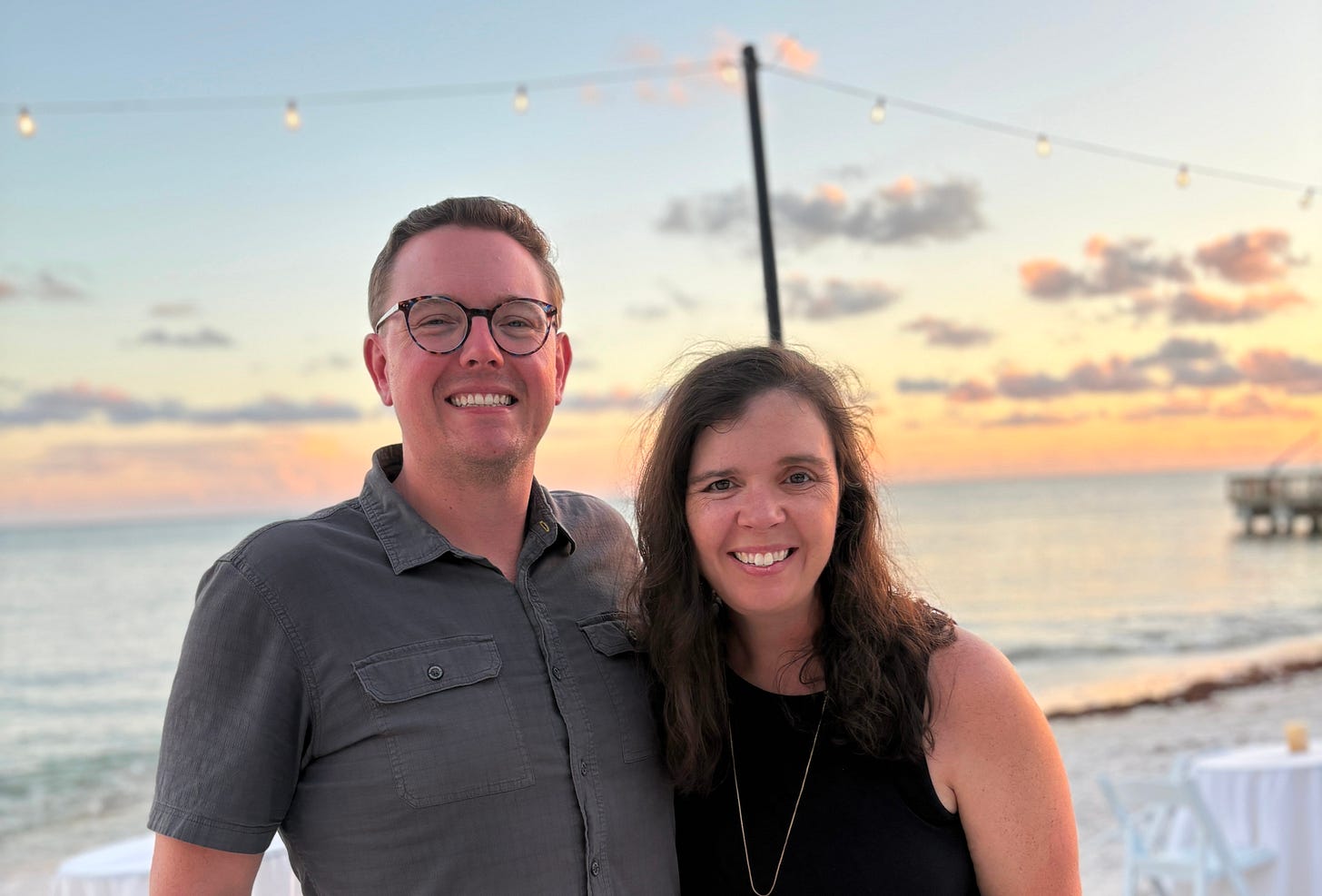
You did an awesome job on your Venn Diagrams! This is so helpful to be able to see the effect leaving has on relationships. Big, big hugs! We are so thankful for you, Christian, and your family!
"But what makes tragedy more devastating, what morphs it into trauma, is when there is a lack of support and relational care in the wake of the tragedy." Church betrayal too frequently leads to judgment, often based on rumors, which is isolating and crushing. But even when people reject us, God never does. That is how we go on. Thank you for your words, Chelsey!